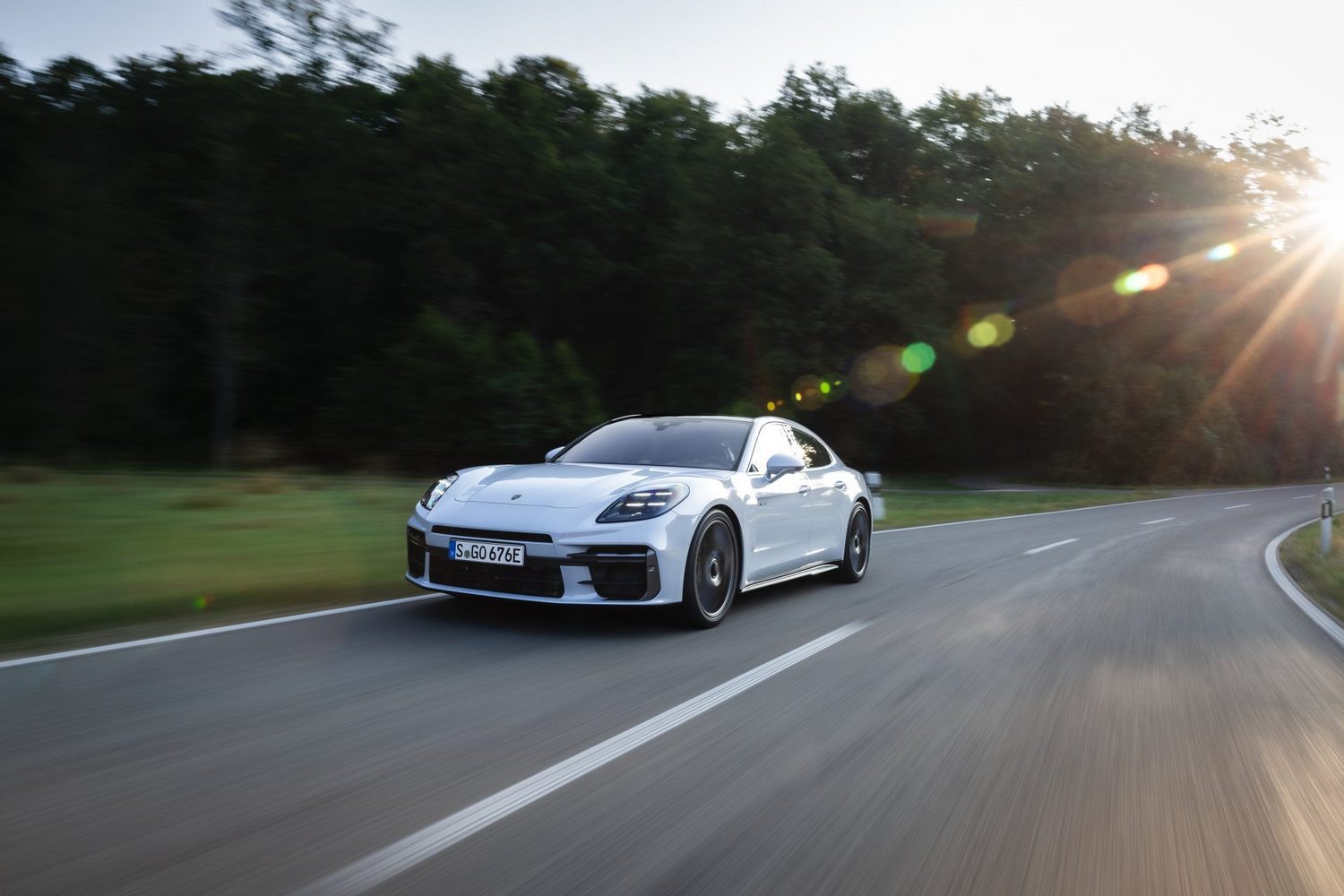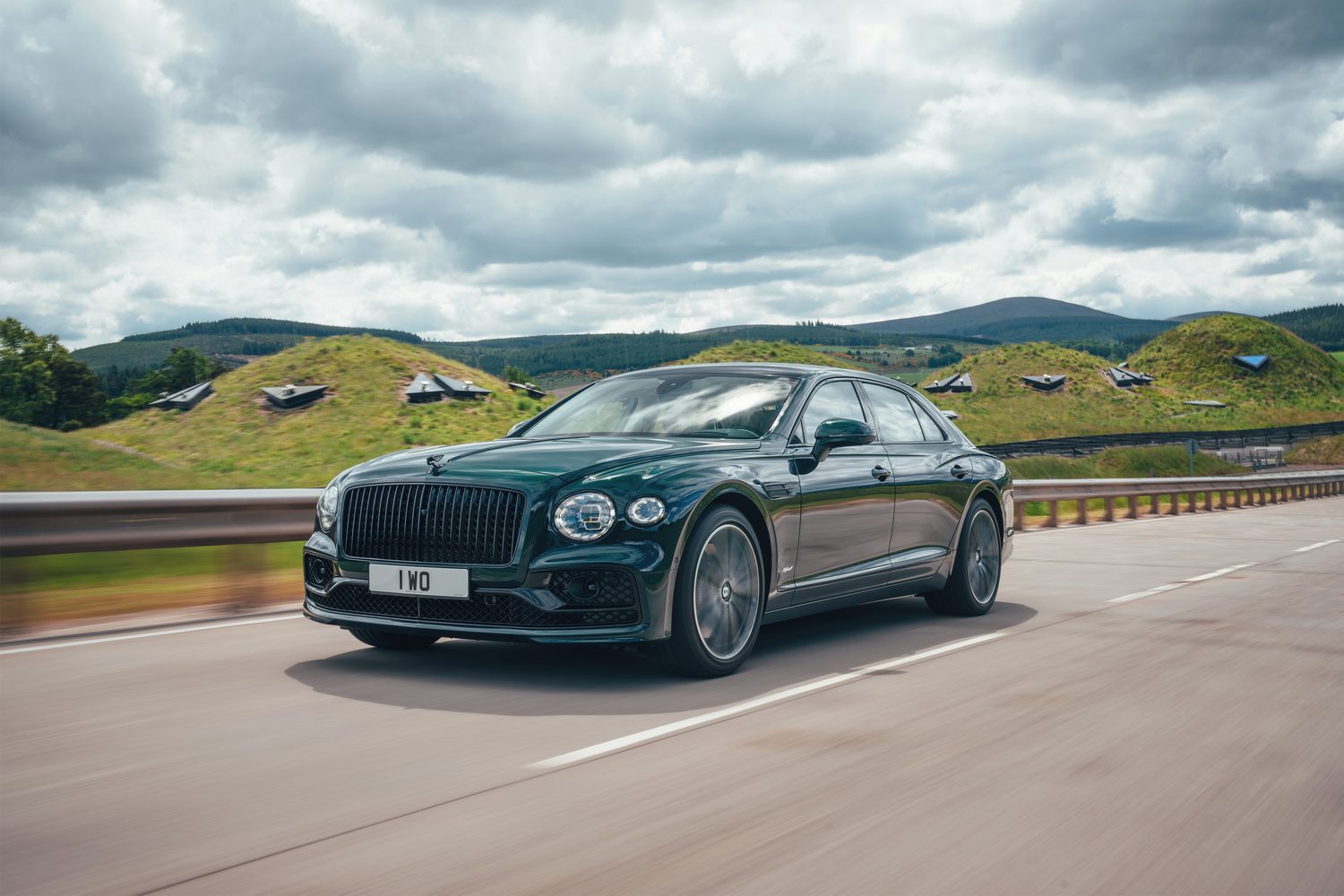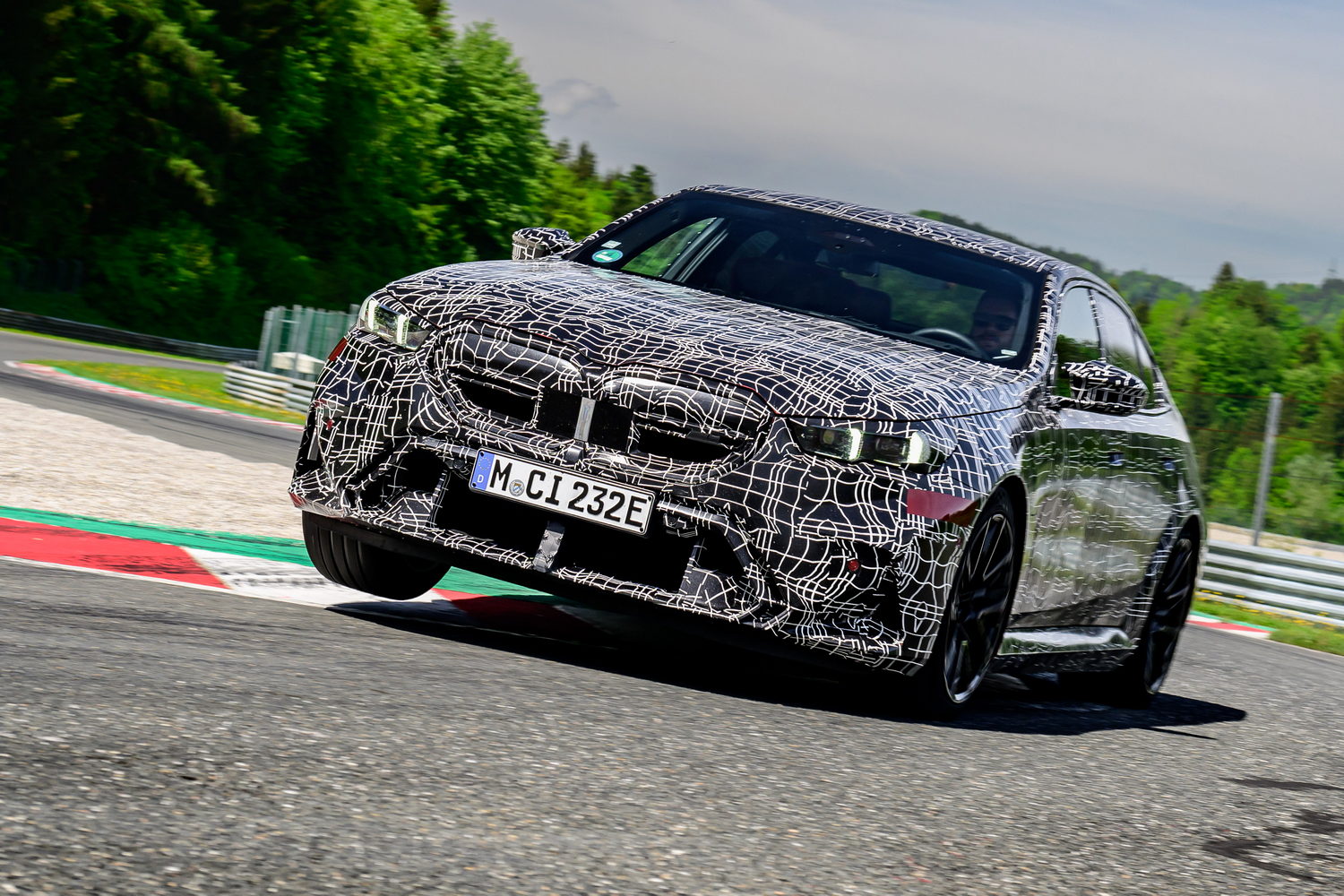Late in its life, the previous-generation Porsche Panamera Turbo S E-Hybrid got to outrageous peak outputs from its plug-in hybrid (PHEV) drivetrain of 700hp and 870Nm. But with this current model of the German company's sports 'saloon' (NB: it's a fastback), there's already a Turbo E-Hybrid with 680hp and 930Nm at its disposal, meaning it can go 315km/h flat out and has a 3.2-second 0-100km/h time.

So how do you top both of those with the new Turbo S E-Hybrid? Simple: shock and awe. You're looking at a comfortable, luxurious, plug-in-hybrid toting the sort of horsepower that wouldn't disgrace a historic Can-Am car. We've got to grips with this 782hp/1,000Nm monster on roads surrounding Stuttgart in Germany, to see if it can handle all that grunt or if it has a severe case of megalomania.
How much is the Porsche Panamera Turbo S E-Hybrid in Ireland?

With a starting price of €215,451, set against an entry-level point of €116,533, the Turbo S E-Hybrid is clearly not the most affordable way to sit your backside in a new Panamera. However, it's not the most expensive model in the range.
Also, because it is the de facto flagship model (no matter what the price list says), the Turbo S E-Hybrid comes with a wealth of standard-fit kit, including some key chassis componentry that we shall come onto later in the review. Factor in its likely low running costs, as a result of its PHEV status, and there's a case to be made that this ultimate Panamera could prove a sound financial option. If you're quite well-off in the first place, naturally.
What's different on the outside of the Porsche Panamera Turbo S E-Hybrid?

'Turbonite' is your clue as to this car's phenomenal potential, although it's also used on the 'lesser' (can't believe we're writing that about a 680hp V8 PHEV, but here we are...) Turbo E-Hybrid. Basically, it's a kind of graphite-grey colour that's exclusive to the Turbo-badged Panameras and it's used for much of the exterior detailing. For further identifiers, there's also the 'Turbo S' boot badging and a set of whopping 21-inch centre-lock alloy wheels, while like any Panamera PHEV this 782hp monster has 'E-Hybrid' written in discreet (and non-caps) script on its front doors.
It used to be that Turbo Porsches had squared-off exhausts, but that's not the case here, so the Turbo S E-Hybrid is a visually discreet ultra-performance car. You could, if you weren't paying it too much attention, mistake it for a Panamera 4 at a casual glance.
A look inside the Porsche Panamera Turbo S E-Hybrid

The sheer quality and ergonomic correctness of a third-generation Panamera's interior cannot be in doubt, and that's certainly true of the range-topping Turbo S E-Hybrid's cabin. It comes with plush Adaptive Sports 18-way electrically adjustable front seats, a GT Sport steering wheel and lots of Turbonite detailing as standard, which further improves the ambience, while space onboard is generous too - accepting that this 782hp PHEV has just the four seats within, not five.
Visibility out of the car in all directions is good, even through the raked rear windscreen, but the boot capacity on this model is the smallest of all in the range (along with the Turbo E-Hybrid) at 421 litres with all seats in use and 1,255 litres with the second row folded away. Those are the sorts of numbers you'd associate with a large family hatchback or B-segment crossover these days, which doesn't flatter the Porsche, but at least it comes with a nice, big tailgate on it to make loading bulky and heavy items into the cargo area that bit easier than if it were a true saloon.

The Porsche Panamera Turbo S E-Hybrid's on-board technology
Like any other Panamera, the Turbo S E-Hybrid has the uncovered 12.6-inch 'Curved Display' digitised instrument cluster and the 10.9-inch Porsche Communication Management (PCM) infotainment system. However, it gains the classy and informative head-up display as standard too, which is normally a cost option elsewhere in the range, but the 10.9-inch passenger display screen is still an extra here.

As are luxuries such as four-zone climate control, soft-close doors and a thumping great Burmester top-end sound system, although in mitigation the Turbo S E-Hybrid does have heating for all four seats and the steering wheel from the off, as well as full HD Matrix LED headlights and 3D tail illumination, plus the desirable Sport Chrono pack.
Driving the Porsche Panamera Turbo S E-Hybrid
The Turbo S E-Hybrid has the same arrangement of 4.0-litre biturbo V8 petrol engine, 140kW (190hp) electric motor, 25.9kWh usable battery pack and PDK eight-speed dual-clutch transmission as the Turbo E-Hybrid, but the difference that one little additional letter in the nameplate of the former confers on the Panamera is an additional 80hp of output from the V8 - it makes 599hp all on its own. Totted up, Porsche's engineers allow the Turbo S E-Hybrid's powertrain run to the giddy heights of 782hp and 1,000Nm, which are more than enough to punt this hefty 2,440kg machine from 0-100km/h in 2.9 seconds and on to a top speed of 325km/h, if you're in Germany on a particularly empty Autobahn.

And yet, Porsche obviously doesn't just create hot rods that are all about a disgraceful amount of straight-line speed. To that end, on top of the Porsche Torque Vectoring Plus (PTV Plus) rear axle, variable-ratio Power Steering Plus and simply enormous tyres fitted to the car (which, in this case, are a set of Pirelli P Zero Rs), it is equipped as standard with some of the items that are the most expensive chassis options available elsewhere in the range - including enormous Porsche Ceramic Composite Brakes (PCCB) with discs measuring 440mm front and 380mm rear, the agility-boosting Rear Axle Steering, and then the Porsche Active Ride (PAR) 'magic' suspension.
We've tried this on the Turbo E-Hybrid (PAR needs the 400-volt electrical system of the PHEVs to work, so it's only available on the hybrid Panameras), where it can tilt the body of the car into corners and power its advanced springs to keep the Porsche's shell almost preternaturally flat no matter what provocation you are putting it through. It's a bit eerie in action.

Anyway, this is a serious amount of hardware, and it works quite brilliantly at making the Turbo S E-Hybrid into an unintimidating way of mastering nearly 800 horsepower. The Porsche can change direction quickly without becoming unruly, it deploys its petrol-electric V8 drivetrain's massive reserves with a deftness and dependability that's quite astonishing, and it feels nimbler and more exploitable in the corners than it has any right to be, given its chunky kerb weight.
By any rational measure, and if driven entirely in isolation with no reference to its own range or competitors, the Turbo S E-Hybrid is a stunning achievement. And yet, we can't shake the feeling that it's still compromised in a way the lighter, less-powerful models in the line-up aren't. There are times, as you approach a corner in the top-dog Panamera, where you press the brake pedal... and then you press it some more in a slightly panicked fashion, because you're very suddenly acutely aware of the inertia involved when a car this heavy can move this startlingly fast. And despite the fact you can coerce the Turbo S E-Hybrid into a neutral or even oversteer stance on corner exit if you want, it always feels a bit risky trying to deploy the throttle as much as you would arguably like to, even in the dry. Which means it devolves into something of a point-and-shoot machine, like a super-powered EV, rather than a coherent and flowing sports saloon... like its GTS sibling.

At least, like every other Panamera, it's a smooth, refined and comfortable thing to travel in when you're not gunning it about the place like a mad person, although again that's once you've acclimatised yourself to the oddness of PAR (which only works in Normal mode - in Sport and Sport Plus, the car goes back to loading up on the outside axle to give it a more traditional feel).
It can be a mighty weird sensation when the car is tilting the opposite way to what you expect in left- (lean right) and right-hand (lean left) bends, while full braking or full acceleration doesn't result in any pitch or dive at all. Technically amazing, physically unusual. We're sure you'd get used to it eventually, but we prefer a slightly more organic-feeling suspension set-up, like Porsche's own adaptive air suspension with PASM variable damping.
How economical is the Porsche Panamera Turbo S E-Hybrid?

The enlarged 25.9kWh battery pack blesses the Panamera Turbo S E-Hybrid with an all-electric driving range getting closer to 100km than 50km, which is good, and that in turn means it can turn in impressive official figures of 1.4-1.6 litres/100km (that's theoretically up to 201.8mpg) with CO2 of just 31-36g/km.
Obviously, you're unlikely to get close to those in regular usage if you don't top up its battery from the mains that often, but encouragingly even on a spirited drive in it, we managed to see 9.7 litres/100km (29.1mpg) thanks to having plenty of battery charge. Now while that might not look so impressive stacked up against 201.8mpg on paper, to get nearly 30-to-the-gallon from a 2.45-tonne car with this monstrous level of power and a V8 petrol engine, all while driving it quickly, is nothing short of witchcraft really. Just make sure you don't run it on low battery and in Sport Plus mode all the time, otherwise your fuel consumption will soon balloon well beyond these acceptable levels.

The reasons you'd buy a Porsche Panamera Turbo S E-Hybrid
You'd buy this thing because it is the ultimate expression of Porsche's awesome technological know-how. As a showpiece of how to use electric augmentation to both improve running costs and the sheer, monumental performance of a twin-turbo V8 powertrain, the Turbo S E-Hybrid is a gobsmacking achievement.
That you can also say to friends and acquaintances it has 782hp is also surely going to be all the status-affirming data many owners will need. Nevertheless, we personally feel it's a bit too heavy and a bit too complex for its own good - the GTS, for all its unfortunate placing in the pricing hierarchy as a result of its elevated CO2 levels, is the sweeter and more involving steer. We're still glad a near-800hp variant exists, nonetheless.

Ask us anything about the Porsche Panamera Turbo S E-Hybrid
If there's anything about the Porsche Panamera Turbo S E-Hybrid we've not covered, or you'd like advice in choosing between it and other cars, you can avail of our (completely free) expert advice service via the Ask Us Anything page.































